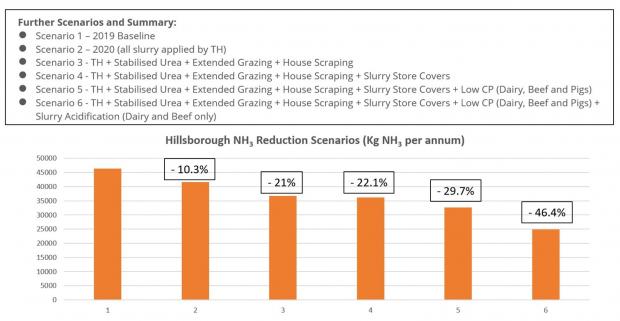What is being done at AFBI Hillsborough to reduce ammonia emissions from the farm?
In 2019 the spreading of slurry by splashplate was stopped on the farm and was replaced by trailing hose (TH). Modelling carried out using the NARSES ammonia inventory model suggests this single strategy would have decreased farm emissions by over 10%.
In 2021, straight urea fertiliser use has been replaced by stabilised urea, which uses a urease inhibitor and reduces ammonia emissions from urea application by approximately 78%.
A number of other ammonia reduction strategies are being phased in on the farm and some, including extended grazing, more frequent animal house scraping, lower crude protein (CP) diets and slurry acidification, have been modelled to estimate reductions in ammonia that would be achievable on the Hillsborough farm:

Will ammonia from the Hillsborough farm negatively impact upon any designated sites?
Most of the ammonia emitted from an agricultural activity will be deposited close to source, the majority within a few kilometres. As such, much of the ammonia generated at the Hillsborough farm will be deposited on the agricultural land area within the estate.
AFBI Hillsborough is located over 10km away from the closest terrestrial priority habitat and does not contribute significantly to Nitrogen deposition at any designated site. The significant areas of forestry within the estate will also act to intercept a proportion of the emitted ammonia from being transported off-site, and also intercept a proportion of ammonia from surrounding agricultural enterprises from being transported on-site.
